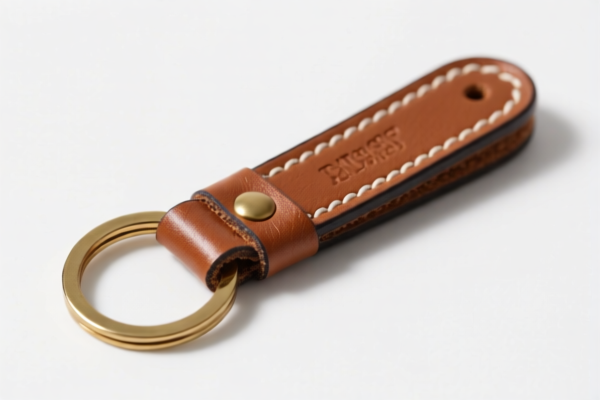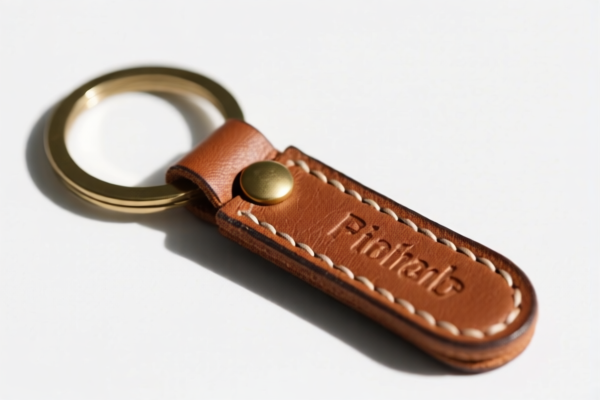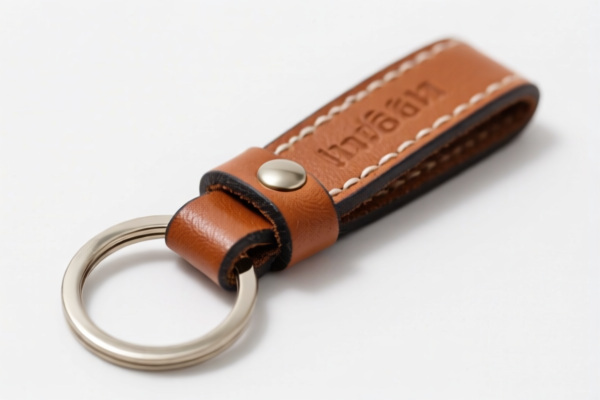| HS Code | Official Doc | Tariff Rate | Origin | Destination | Effective Date |
|---|---|---|---|---|---|
| 3926909989 | Doc | 42.8% | CN | US | 2025-05-12 |
| 4202316000 | Doc | 63.0% | CN | US | 2025-05-12 |
| 8301600000 | Doc | 40.3% | CN | US | 2025-05-12 |
| 7326903500 | Doc | 112.8% | CN | US | 2025-05-12 |
| 4205008000 | Doc | 55.0% | CN | US | 2025-05-12 |




Keychains
Keychains, also known as keyrings, key fobs, or key holders, are small chains, rings, or fobs used to carry multiple keys, or to attach decorative items to keys. They serve both a practical and aesthetic function.
Material
Keychains are manufactured from a diverse range of materials, impacting their durability, cost, and appearance:
- Metal: Common metals include stainless steel, brass, zinc alloy, iron, and aluminum. Metal keychains are robust and can be intricately designed.
- Plastic: Acrylic, PVC, and other plastics offer a wide range of colors and are often used for novelty or character-themed keychains. They are generally lighter and less expensive.
- Leather: Leather keychains, often combined with metal hardware, provide a classic and durable option.
- Fabric: Woven or embroidered fabric keychains are frequently used for promotional items or personalized designs.
- Rubber/Silicone: These materials are flexible, colorful, and often used for molded character or logo keychains.
- Wood: Wood keychains offer a natural aesthetic and can be carved or laser-engraved.
Purpose & Function
The primary function of a keychain is to organize and secure keys, preventing loss or misplacement. However, keychains often extend beyond this basic utility:
- Key Organization: Allows multiple keys to be carried efficiently.
- Identification: Can help identify the owner of the keys.
- Decoration: Serves as a personal accessory or a statement of interests.
- Promotional Items: Businesses often use keychains branded with their logo.
- Collectible Items: Certain keychains, particularly those featuring popular characters or limited editions, are collected.
- Functional Additions: Some keychains incorporate tools like bottle openers, LED lights, or USB drives.
Usage Scenarios
Keychains are used in a multitude of everyday scenarios:
- Personal Use: Carrying house, car, and office keys.
- Commercial Use: Hotel room keys, locker keys, car dealership keys.
- Promotional Events: Giveaways at conferences, trade shows, or marketing campaigns.
- Retail: Sold as souvenirs, gifts, or fashion accessories.
- Security Systems: Used with access control fobs.
Common Types
Keychains come in a wide variety of designs and configurations:
- Standard Ring Keychain: A simple metal ring for attaching keys.
- Chain Keychain: Features a metal chain connecting a fob or decorative element to a key ring.
- Split Ring Keychain: Uses a split ring mechanism for easy key attachment and removal.
- Carabiner Keychain: Utilizes a carabiner clip for attaching keys to belt loops or bags.
- Bobble Head Keychain: Features a small bobble head figure attached to a chain.
- Character Keychain: Depicts popular characters from movies, TV shows, or video games.
- Photo Keychain: Allows for the insertion of a small photograph.
- Bottle Opener Keychain: Integrates a bottle opener into the design.
- LED Keychain: Includes a small LED light for illumination.
- USB Drive Keychain: Combines a USB flash drive with a keychain for convenient data storage.
- Wristlet Keychain: Features a loop for wearing on the wrist.
- Retractable Keychain: A cord extends and retracts for easy access to keys.
- Floating Keychain: Designed to float in water, often used for boat keys.
Keychains are small decorative items often attached to keys or used as ornaments. They can be made from various materials including metal, leather, or copper, and are used for identification or as personal accessories.
The following HS codes may be relevant based on the provided reference material:
-
7419801500: Other articles of copper; Other: Containers of a kind normally carried on the person, in the pocket or in the handbag. This code could apply if the keychain is made of copper and designed to be carried as a personal item.
- 74: Metals.
- 19: Copper articles.
- 80: Other articles of copper.
- 15: Containers of a kind normally carried on the person, in the pocket or in the handbag.
-
8308909000: Clasps, frames with clasps, buckles, buckle-clasps, hooks, eyes, eyelets and the like, of base metal, of a kind used for clothing or clothing accessories, footwear, jewelry, wrist watches, books, awnings, leather goods, travel goods or saddlery or for other made up articles; tubular or bifurcated rivets, of base metal; beads and spangles, of base metal: Other, including parts: Other. This code may be applicable if the keychain incorporates clasps, hooks, or other similar components made of base metal and is used as an accessory.
- 83: Base metal articles.
- 08: Clasps, buckles, and similar articles.
- 90: Other articles.
-
4205008000: Other articles of leather or of composition leather: Other: Other: Other. If the keychain is made of leather or composition leather, this code could be relevant.
- 42: Leather articles.
- 05: Other leather articles.
- 00: Other articles.
-
7419805050: Other articles of copper: Other: Other: Other. This code could apply if the keychain is made of copper and does not fall under the "containers" category.
- 74: Metals.
- 19: Copper articles.
- 80: Other articles of copper.
- 50: Other.
According to the provided reference material, the HS code options related to 'keychains' are limited, with only the following 4 found.
Customer Reviews
No reviews yet.